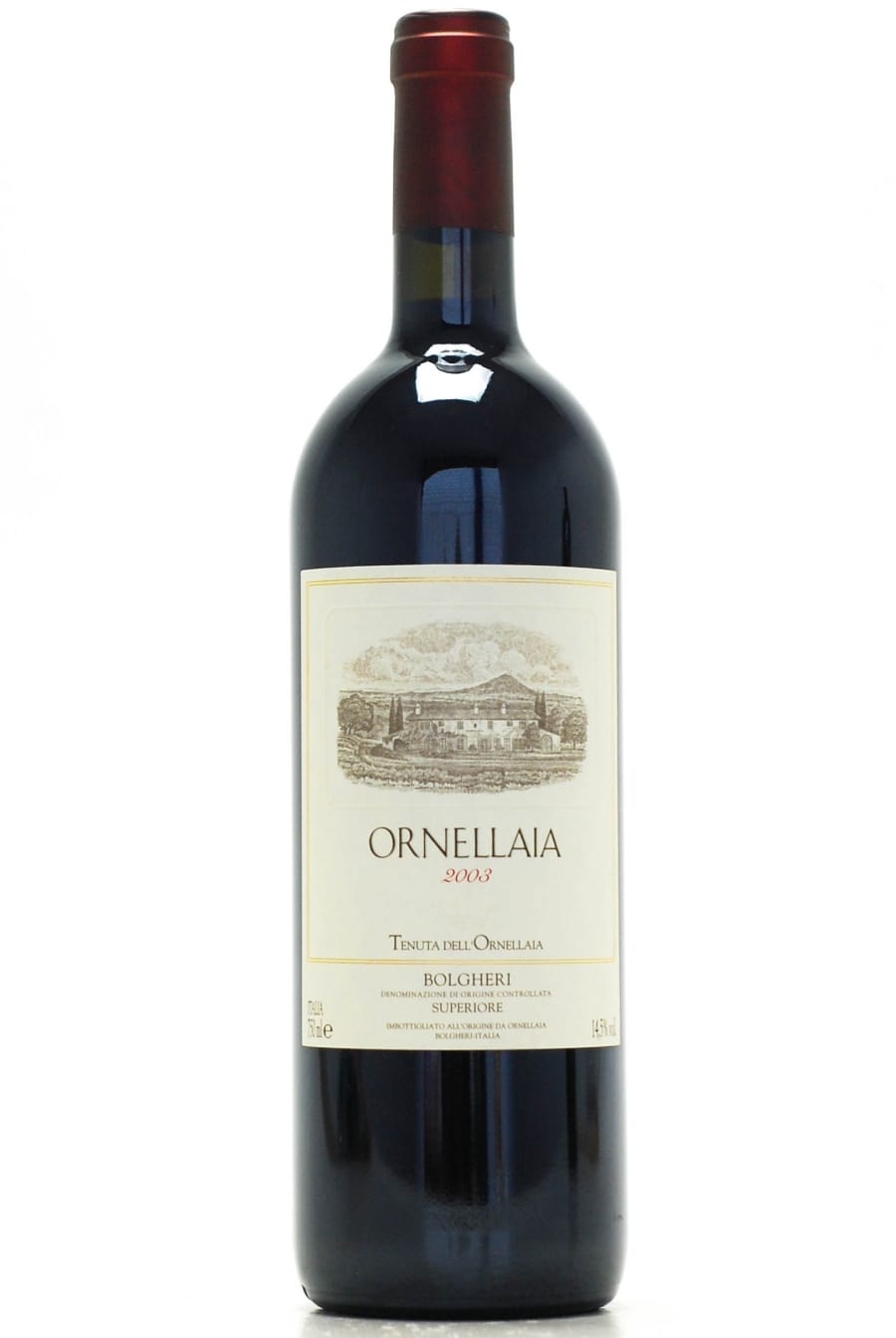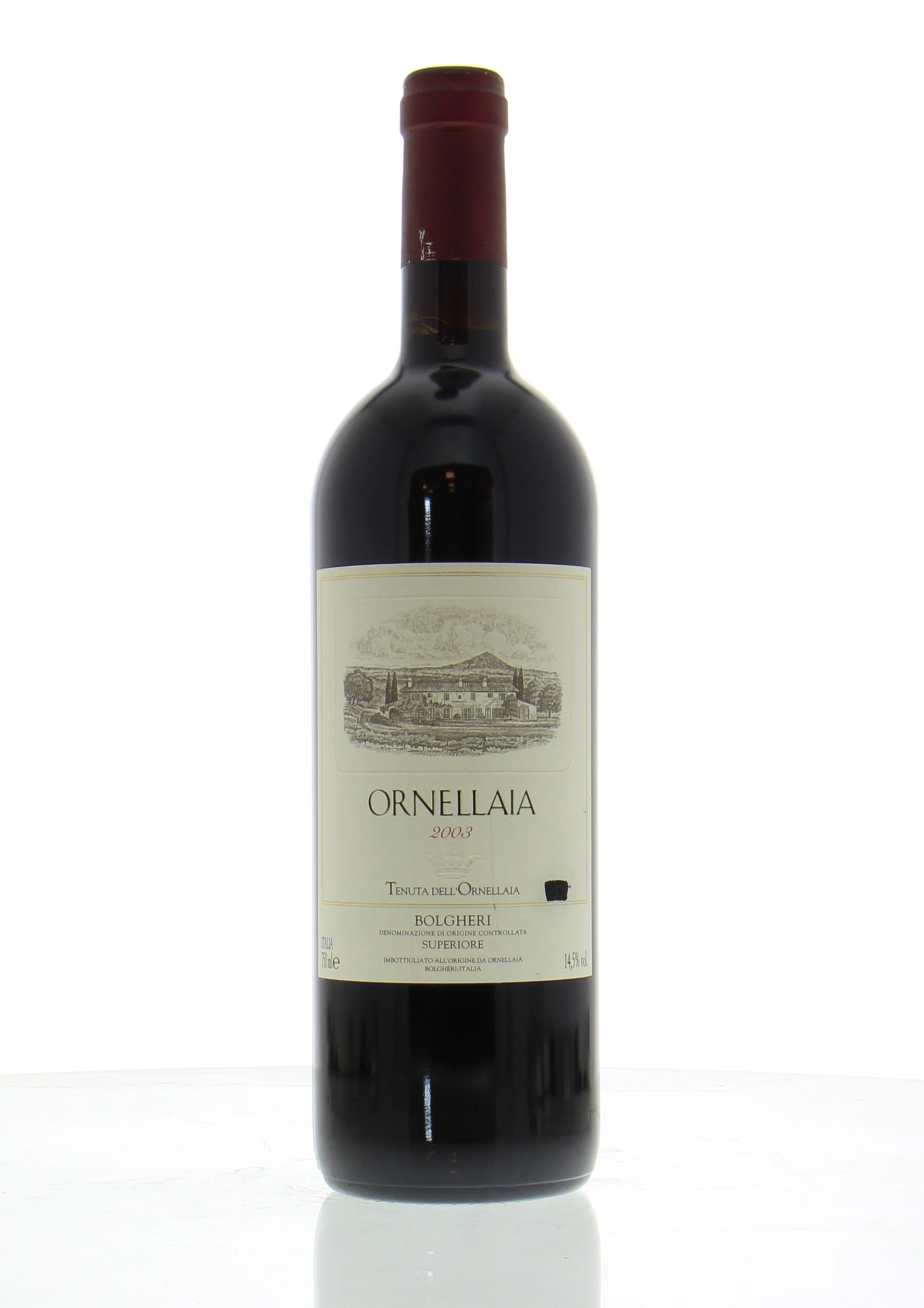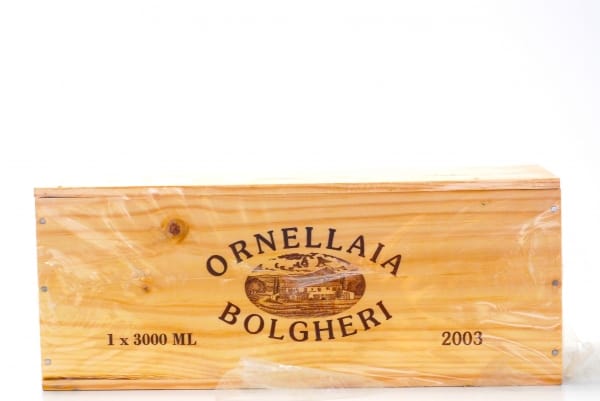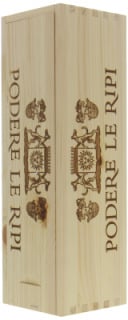Ornellaia 2003 Tenuta dell' Ornellaia
| Classificatie | Cru Classe |
| Wijnsoort | Rood |
| Producent | Tenuta dell' Ornellaia |
| Jaar | 2003 |
| Land | Italië |
| Streek | Toscane |
| Druif | Cabernet Sauvignon, Merlot, Bordeaux Blend |
| Inhoud | 0,75 |
| Conditie | Perfect |
| Etiket | Licht gevlekt |
| Drinkbaar | -2020 |
| Voorraad | 0 |
| Conditie | Perfect |
| Etiket | Stain on label |
| Conditie | Perfect |
| Etiket | Perfect |
| Conditie | Perfect |
| Etiket | Perfect |
Professionele reviews
Robert Parker (93)
The opulent 2003 Ornellaia (60% Cabernet Sauvignon, 15% Merlot, 20% Cabernet Franc and 5% Petit Verdot) presents a dramatic contrast to the 2004 in its super-ripe, open nose and jammy dark fruit. Ample and warm on the palate, it is clearly the product of a very hot vintage, yet it shows notable freshness along with much persistence, great overall balance and a lingering note of sweetness on the finish. 93/Anticipated maturity: 2008-2018. Tenuta dell’Ornellaia is without question one of Italy’s blue-chip properties. The gorgeous, sprawling estate is located in Bolgheri in Tuscany’s Maremma. On a recent visit I had the opportunity to taste a number of the estate’s wines with General Manager/Agronomist Leonardo Raspini and Oenologist Axel Heinz, including verticals of the estate’s top bottlings Ornellaia and Masseto. Ornellaia is a Bordeaux-inspired blend consisting principally of Cabernet Sauvignon, Cabernet Franc and Merlot. In 2003 a small percentage of Petit Verdot was introduced. The use of several varietals gives the winemaking team the luxury of being able to tailor the exact proportion of the blend to the specific strengths of a given vintage. Because the blend tends to vary from year to year in a vertical tasting Ornellaia shows many different facets of its personality. After harvest the varietals are vinified separately. Fermentation and maceration lasts between 25-30 days after which the wines are moved into French oak barrels where they age for 12 months. The wines are then racked and assembled into the final blend, which spends an additional six months in barrel prior to being bottled. The percentage of new oak has risen from 50%, which was used for vintages 1997 and 1998, to 60% used in 1999, to the 70% the estate has employed since 2000.
Winespectator (92)
Subtle aromas of currant, coffee and blackberry, yet rather coarse on the palate just now. Full-bodied, with velvety tannins and a long, long finish. Needs some time to mellow. Cabernet Sauvignon, Cabernet Franc, Merlot and Petit Verdot.

























